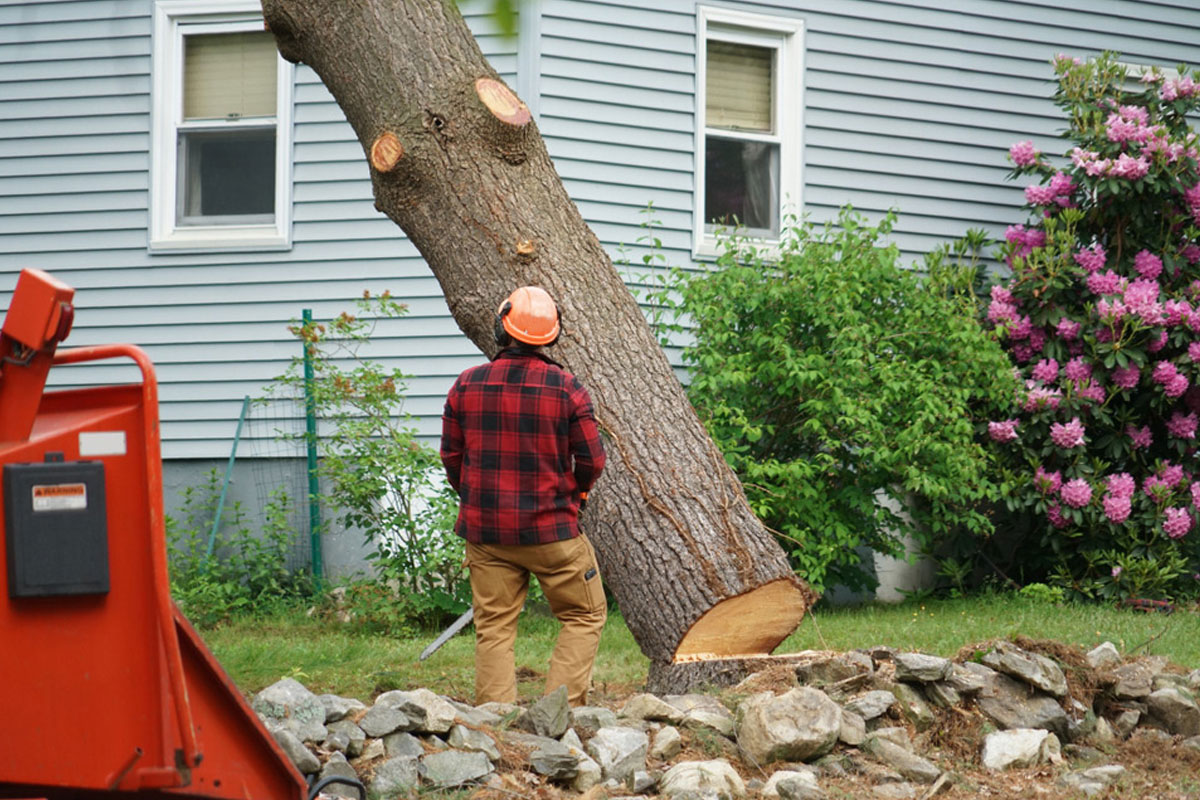Tree Removal: How Much Does It Cost in 2023?
- Posted on Nov. 7, 2023
- Home
- Views 68
Tree Removal: How Much Does It Cost in 2023?
Creating a natural haven in your property, trees bring shade, beauty, and a sense of tranquility. However, there are times when a tree has served its purpose or poses risks, necessitating removal. The tree removal prices range from $200 to over $2,000, confusing many homeowners with versatile options and types of procedures.
Read More

The Average Cost in a Nutshell
|
Highest price |
$2,000 |
|
Lowest price |
$300 |
|
Average price |
$1,200 |
Which Aspects Affect the Expenses?
The outgoings incurred in tree removal can fluctuate due to several factors, which include:
- Tree Size: The size and species of the tree play a pivotal role in determining removal costs. Taller trees with heights of 100 feet, can demand prices of $2,000 or more. Conversely, smaller trees or those of a different species may cost considerably less, with heights up to 20 feet in the range of $900 to $1,500.
- Tree Species: Different tree species have varying volumes and complexities in their root systems, affecting removal costs. For instance, Italian Cypress trees, despite reaching up to 50 feet in height, often have simpler removal processes, with costs averaging around $400. Similarly, tall palm trees, despite their height, may cost between $200 and $500 to remove due to their low volume.
- Number of Trees: Removing multiple trees at once can escalate the costs significantly due to the need for additional labor.
- Health: Diseased or structurally compromised trees are more difficult to work with, which again requires more equipment and time.
- Physical Obstacles: Various obstacles such as limited access, poor conditions of the tree, or proximity to other structures can elevate the complexity and cost of the removal process.
- The Level of Urgency: Urgent tree removal comes at a premium, typically doubling or tripling the standard removal costs. On average, an emergency tree removal cost sets you back around $2,500.
- Geographic Location: Factors like remote locations or urban areas, which may require specialized equipment or face logistical challenges, can augment the costs.
- Equipment: Crane rentals, traffic control, arborist consultations, stump grinding, debris removal, and landscaping can contribute significantly to the overall expenses.
Considering the Extras
After the tree is removed, various additional services or considerations might further impact the total cost:
- Stump Removal: Eliminating the remaining stump can incur costs between $150 and $500, depending on the type and size of the root system. Stump grinding, a more cost-effective alternative, typically averages between $100 to $400.
- Wood Chipping: Some companies offer this service after the procedure, usually priced between $70 and $125 per hour.
- Landscaping and Debris Removal: Damage or alteration to existing landscaping or the disposal of debris post-removal can lead to additional costs that may vary based on the project's scope and local disposal fees.
While some procedures can be conducted on your own, others require addressing the tree removal services near me.
Which Trees Require Removal and Why?
To assess whether a tree warrants removal, seeking guidance from an ISA Certified Arborist is crucial. Various factors indicate whether removal is necessary:
- Particular Species: Identify undesirable species vulnerable to frequent breakage or susceptible to insect infestation in your area.
- Health Condition: If over half the tree is unhealthy, it might be time for removal; otherwise, the tree could survive.
- Damage: Severe cracks or damage indicate potential removal necessity.
- Hollowness: Over 30% hollowing could signify a need for removal.
- Dead Branches: If less than a quarter of branches are damaged, pruning might suffice.
- Position of Dead Branches: A concentration of dead branches on one side could indicate deeper issues.
- Leaning Trees: Trees leaning more than 15% off vertical pose safety concerns, warranting potential removal, even if in good health.
Safety Concerns with DIY Removal
While it might be tempting to save costs by performing tree removal yourself, it's essential to recognize the risks involved. DIY tree removal demands proper training, expertise, and safety precautions. In some cases, attempts to remove the tree on your own shall lead to even more expenses.
When to Hire a Pro?
Hiring professional tree removal services, equipped with experience and insurance, is recommended for safe and efficient removal, especially for larger trees and hazardous removal conditions. In conclusion, while costs for tree removal can vary significantly, seeking expert advice and evaluating the multiple aspects involved can ensure a safe and efficient process while meeting your specific needs.
Cutting the Costs: Steps You Can Do On Your Own
- you can easily conduct the preparation by cutting the dead branches of the tree and cleaning the area;
- replace the obstacles that may increase the price;
- wait till the low season, since in spring and summer the costs may be higher due to the urgency;
- compare the companies to find the most beneficial offers.


